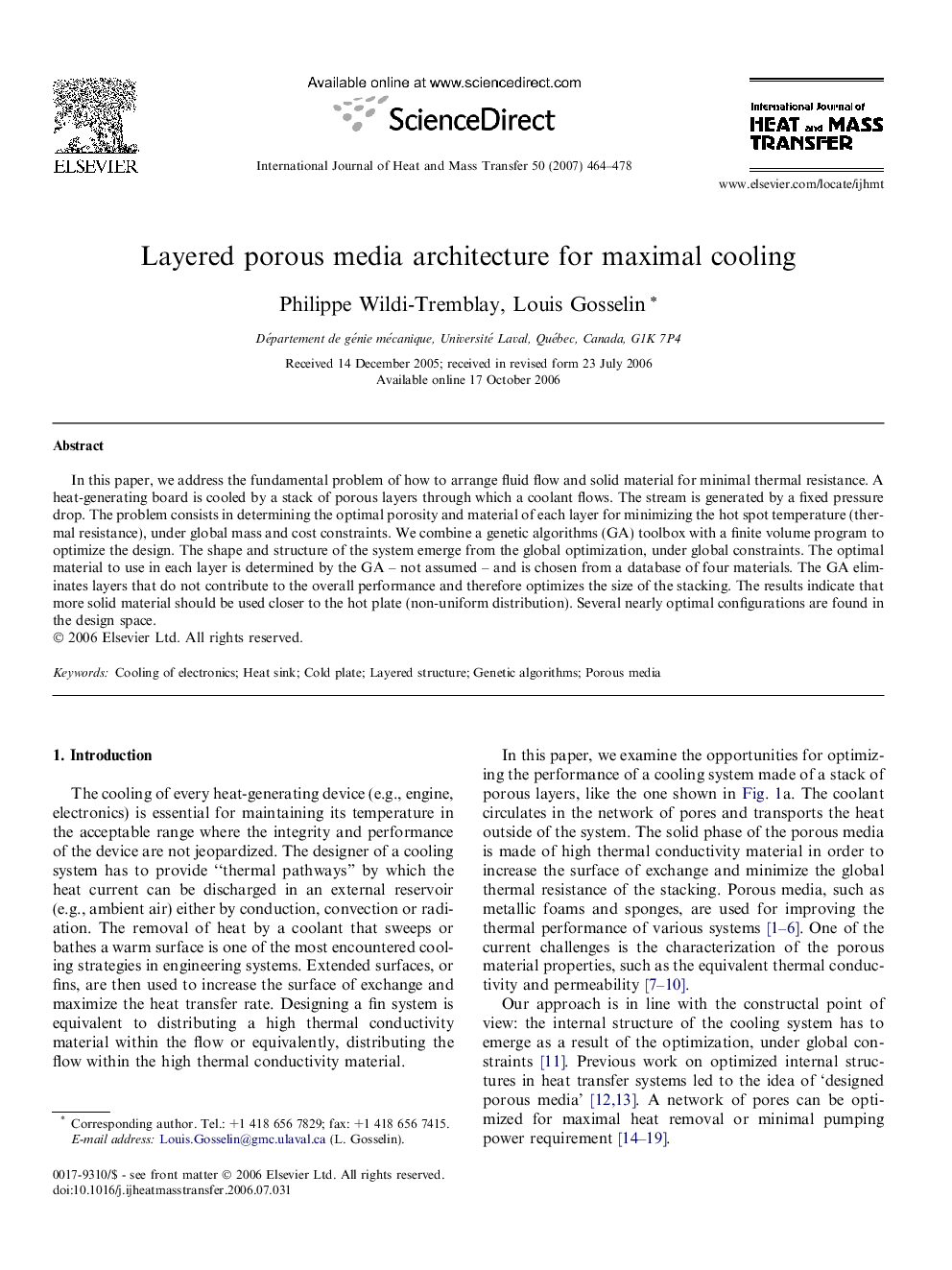| Article ID | Journal | Published Year | Pages | File Type |
|---|---|---|---|---|
| 662347 | International Journal of Heat and Mass Transfer | 2007 | 15 Pages |
In this paper, we address the fundamental problem of how to arrange fluid flow and solid material for minimal thermal resistance. A heat-generating board is cooled by a stack of porous layers through which a coolant flows. The stream is generated by a fixed pressure drop. The problem consists in determining the optimal porosity and material of each layer for minimizing the hot spot temperature (thermal resistance), under global mass and cost constraints. We combine a genetic algorithms (GA) toolbox with a finite volume program to optimize the design. The shape and structure of the system emerge from the global optimization, under global constraints. The optimal material to use in each layer is determined by the GA – not assumed – and is chosen from a database of four materials. The GA eliminates layers that do not contribute to the overall performance and therefore optimizes the size of the stacking. The results indicate that more solid material should be used closer to the hot plate (non-uniform distribution). Several nearly optimal configurations are found in the design space.
